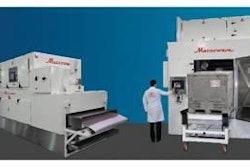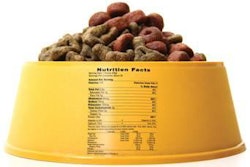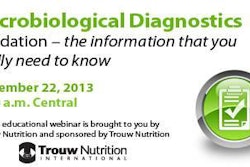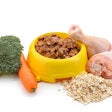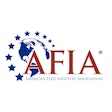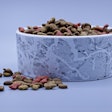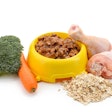No observer of the petfood market can miss the pervasiveness of claims such as "grain-free" and "gluten-free" on dog and cat food labels today. Frankly, though experts can reasonably disagree even in consideration of the same set of facts, in my opinion there is a lack of scientific evidence that these qualities are of truly meaningful benefit to the average pet. Regardless of my perspective, the appeal of these types of claims to some facets of the pet-owning public is undeniable, so the incentive for manufacturers to capitalize on this marketing strategy is significant.
Although I am not aware of any regulations, policies or other official documents from the US Food and Drug Administration (FDA) or the Association of American Feed Control Officials (AAFCO) pertinent to these claims as they apply to petfoods, there are important factors to consider when making a claim in order for it to survive possible regulatory scrutiny.
“Grain-free” claims began to appear on petfood labels mostly as a euphemism for "low-carb." Because AAFCO policy effectively disallows claims regarding carbohydrate content, a means to convey the concept by implicating grains as the culprits facilitated the popularity of this niche. Of course, many of the replacement ingredients for grains (e.g., potatoes, sweet potatoes, tapioca, legumes) can also be high in starches, which muted this purported benefit. Still, the perception of grains as a negative took hold, with some espousing other potential benefits of a grain-free feeding regimen (e.g., more "natural," avoidance of mycotoxins). Rightly or wrongly, many petfood purchasers now consider this aspect to be an important factor in their buying decisions.
Substantiating that a petfood is grain free should be relatively straightforward. For an entirely different purpose altogether (i.e., to allow for "with whole grains" claims and benefits on human food labels), FDA has defined cereal grains to include "amaranth, barley, buckwheat, bulgur, corn (including popcorn), millet, quinoa, rice, rye, oats, sorghum, teff, triticale, wheat and wild rice." On the other hand, FDA does not consider legumes (such as soybeans or peas) or oilseeds (such as sunflowers) to be grains. One commonly used ingredient in petfoods that has been subject to challenge by regulators is flaxseed. However, in the final analysis the consensus appears to be that flaxseed is not a grain, so its use in grain-free petfoods shouldn't be a hindrance.
In making the claim, it is important to avoid any use of grain fractions as well, such as cornstarch, oat hulls or wheat middlings. In fact, while there is no official guidance regarding grain-free claims, use of any fats, oils or other ingredients derived from cereal grains in any manner could potentially compromise the truthfulness of the claim.
“Gluten-free” claims on petfood labels became popular as a result of the success of similar claims on human food labels, though it is unlikely that many consumers completely understand the concept. In a recent movie, the protagonist explains to his friend that "Gluten is a vague term meaning anything bad. Calories are gluten. Fat is gluten." Regardless of any potential misconceptions, many people consider gluten-free to be a healthful notion, for them and for their pets. The fact that wheat gluten was wrongly accused as the cause of the melamine contamination of petfoods in 2007 (when, in fact, it was wheat flour adulterated to test as gluten) certainly added to petfood purchasers' concerns regarding anything to do with any source of gluten.
FDA has established regulations and guidance regarding gluten-free claims on human food labels. While they do not apply to petfoods, their regulatory premise is sound, hence potentially could be used by feed control officials as a basis for determination of whether a claim on a petfood is truthful and not misleading as well. Essentially, a food labeled gluten-free cannot be intentionally made with any amount of a "gluten-containing grain" (wheat, rye, barley or their crossbred hybrids like triticale) or an ingredient derived from such grain that was not processed to remove gluten. Further, to mitigate unintentional inclusion of gluten in the product from cross-contact or other means, the food with the label bearing the claim cannot contain more than 20 ppm gluten.
The list of gluten-containing grains is much shorter than the aforementioned list of grains, so theoretically a grain-free product would also be gluten-free. In fact, a manufacturer could include rice, corn or oats without regulatory consternation, provided that the 20 ppm limit on gluten content was still met (whether consumers would be similarly unconcerned is another matter). While there is no statutory requirement for a manufacturer to actually test the final product for gluten content before making the claim, it is very prudent to do so. There has been some talk of testing for gluten by feed control officials, so due diligence in substantiating the claim prior to going to market is warranted.
Whether a petfood is labeled as grain-free, gluten-free or both, it is sensible for the manufacturer to stick to the statement of fact, with adequate documentation at hand in case challenged by regulators. The claims should stand on their own, allowing consumers to be free to draw any inferences as to benefit they wish to make. Any elaboration or explanation of the purported benefits, such as "for improved health," "because grains are unnatural and full of toxins" or "many dogs are sensitive to gluten" is likely to meet with staunch regulatory resistance.



